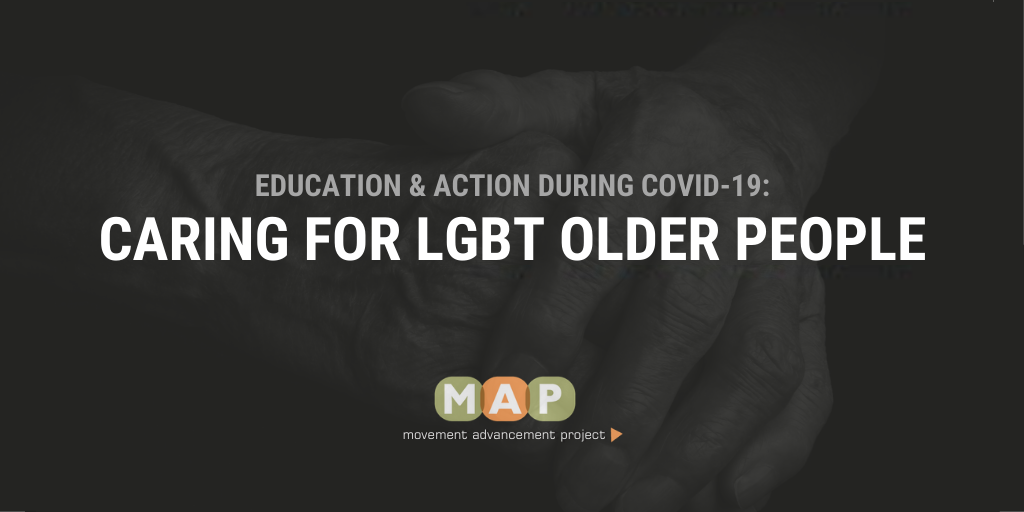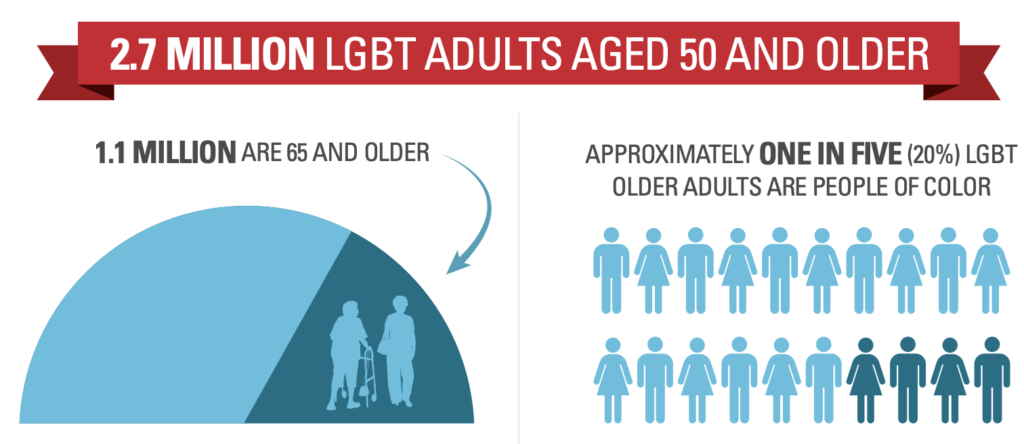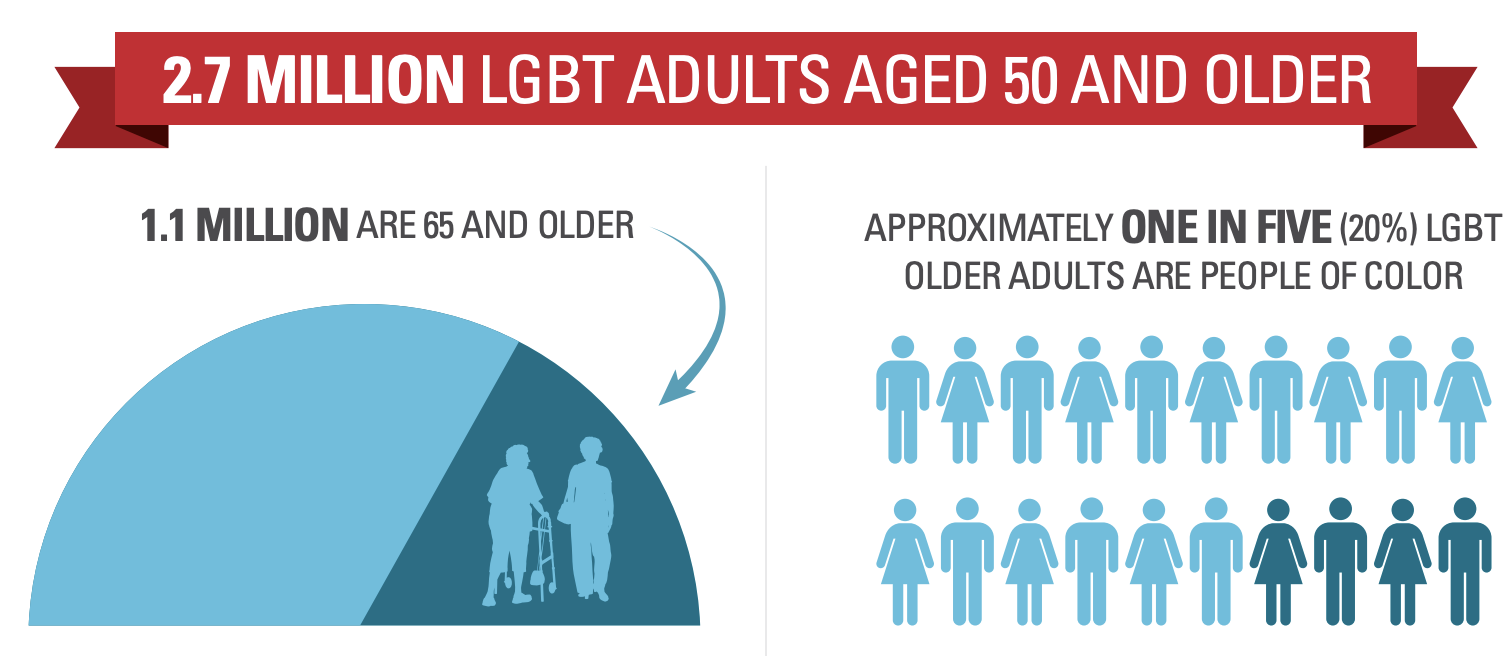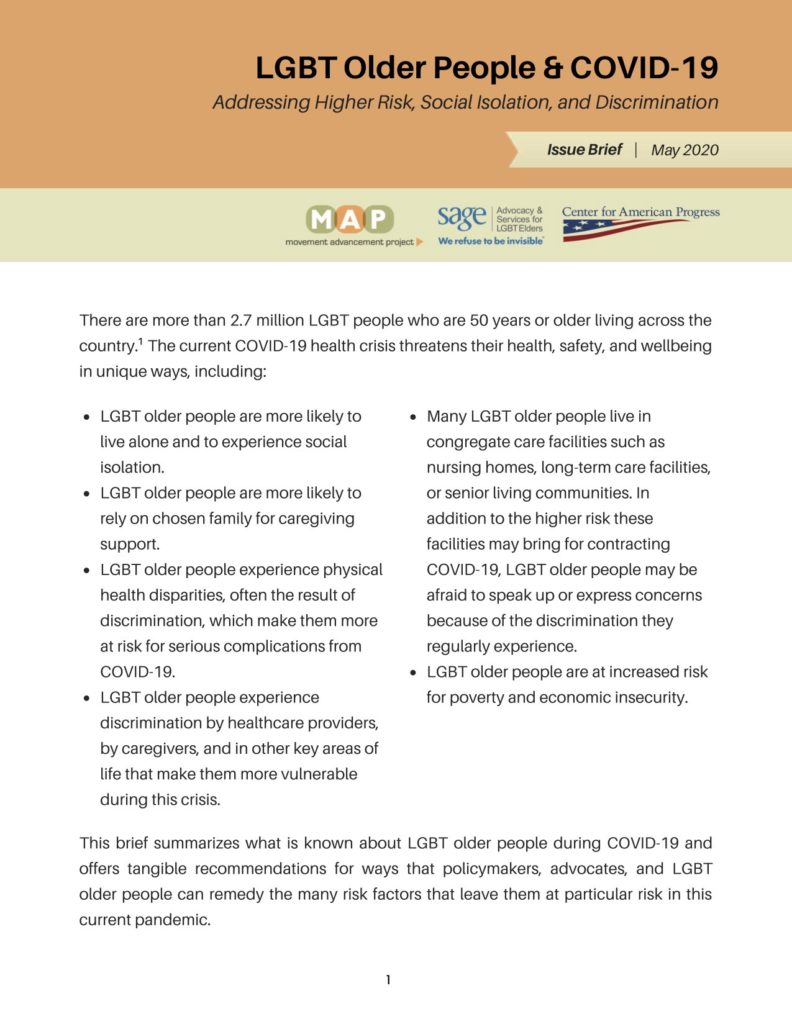This article originally appeared on Medium.

Older adults in the United States are at increased risk for contracting COVID-19. They are particularly vulnerable without access during the pandemic to the health care resources and social structures that contribute to overall wellness. This is especially true for the 1.1 million LGBTQ people who are ages 65 and older living across the country.

While LGBT older people are at a greater risk for the virus based on age, a lifetime of discrimination — whether in health care, employment, or in daily life — means a higher likelihood of underlying health conditions that make them more vulnerable during this crisis. As a result, LGBT older people may be less likely to go to the doctor or seek assistance because they fear discrimination or have experienced discrimination. According to a survey conducted by SAGE, 40% of LGBT older respondents in their 60s and 70s reported that their healthcare provider didn’t know about their sexual orientation.
Like many older people in the United States, LGBT older people rely on a network of service providers as they age — for community programming and congregate meals, for health care, and for housing ranging from independent living to skilled nursing. However, nearly half of LGBT people who entered long-term care or had a loved one in long-term care experienced mistreatment in a care facility:
- Nearly one-quarter (23%) of incidents that were based on a resident’s real or perceived sexual orientation and/or gender identity involved verbal or physical harassment from other residents.
- Twenty percent involved refusal to admit or re-admit.
- Fourteen percent of incidents involved verbal or physical harassment by staff.
What’s more, many nursing homes and long-term care facilities across the country are experiencing COVID-19 outbreaks that are directly affecting aging communities, including older LGBT people. The pandemic has infected elderly residents and their caregivers in more than 15,000 nursing homes nationwide. According to estimates by the Kaiser Family Foundation, residents and staff at nursing homes and other long-term care facilities account for 41% of COVID-19 deaths in the United States.
And while older adults across the country have struggled with social isolation even before the pandemic, LGBT older people are more likely to live alone and to lack an extended family network they can turn to for support. During this time of social distancing, this can leave them particularly vulnerable because they may have no one to count on to pick up groceries or prescriptions, to check on them, or to provide vital social connection. In California, for example, the Williams Institute estimates that 39% of LGB people and 33% of transgender people over the age of 65 live alone. LGBT older adults were half as likely to have life partners or significant others; half as likely to have close relatives to call for help; and four times less likely to have children to provide care. Now, as COVID-19 sweeps across the country, many remain estranged from family and religiously-affiliated institutions on which others rely.
Read more from MAP, SAGE, and the Center for American Progress: LGBT Older People & COVID-19
The opinions expressed in this article are those of the author and do not necessarily reflect those of the Diverse Elders Coalition.


